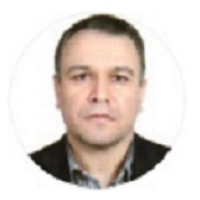A Synthesis Method Using Environmental, Geological and Remote Sensing Data in Groundwater Research: A Case Study of Saveh Plain
Groundwater is considered the major portion of the world’s freshwater resources. One of the main challenges facing the sustainable development of IRAN is the need for better management of its limited fresh water resources. Hydrogeological mapping of groundwater resources is one of the main tools for the controlled development of groundwater resources. Remotely sensed surface indicators of groundwater provide useful data where practical classical alternatives are not available. Integrated remote sensing and GIS are widely used in groundwater mapping. Locating potential groundwater targets is becoming more convenient, cost effective than invasive methods and efficient with the advent of a number of satellite imagery. The nature of remote sensing-based groundwater exploration is to delineate all possible features connected with localization of groundwater. Data, driven out of remote sensing, support decisions related to sustainable development and groundwater management. With increasing population and urban development as well as agriculture, attention has been paid to the management of surface and subsurface water. One of the ways to manage water resources is to identify water areas with different potentialities and exploit them according to their capacity. Today, due to the efficiency of the GIS, this tool is used to provide a variety of models and zones, at a low cost and time saving, many groundwater issues. All the information layers have been integrated through geographical information systems analysis and the groundwater potential zones have been delineated. Weighted overlay modelling technique was used to develop a groundwater potential model with three weighted and scored parameters. In the present study, a combination of remote sensing data, geographic information system and multi-criteria factors has been developed to prepare a map of susceptible groundwater in the city of Saveh. Thematic maps of each of the factors affecting groundwater, including lithology map, precipitation map, drainage map, land use map, linear Density map, Topographic map, Slope map, Aspect map and temperature map using data Landsat 8 satellite, Digital Elevation Model, geological maps, fractures, soil, land use and rainfall were used. In the next step, after preparing the Raster map these factors, According to hierarchical analysis method, each of them was assigned weight. Finally, the above-mentioned thematic maps were computed using GIS analysis using a weighted algorithm, and a groundwater potential map was obtained. Although the area is characterized by hard rock, the area has been categorized into five distinct zones—excellent, good, fair, poor, and very poor. According to the final map, 14.5% of the area has a very low potential, 7.9% has low potential, 21% has a medium potential, 34.3% has a good potential, 22.5% has a very good potential. The high potential zoning is more consistent with alluvial deposits, plum-pudding stone and coarse alluvial deposits, as well as areas that cover the lands of the garden and the shrub. No potential zone matches to maximum Elevation and other matches with areas that have volcanic rocks and Granite is. Finally, to assess the accuracy and validation of the results, the location of the wells in the study area was used. By comparing the final map and dispersion of piezometer wells, the accuracy of the method used in this study was confirmed. The results of the assessment showed that most wells exist in very good potential areas. Although some of them are also in other areas. This could be due to the fact that in these areas there are many slopes and may have been caused by soil layers in the basement and along faults and fractures that caused water outcrops in those areas. While their power supply is very good at higher potential areas.
- حق عضویت دریافتی صرف حمایت از نشریات عضو و نگهداری، تکمیل و توسعه مگیران میشود.
- پرداخت حق اشتراک و دانلود مقالات اجازه بازنشر آن در سایر رسانههای چاپی و دیجیتال را به کاربر نمیدهد.



